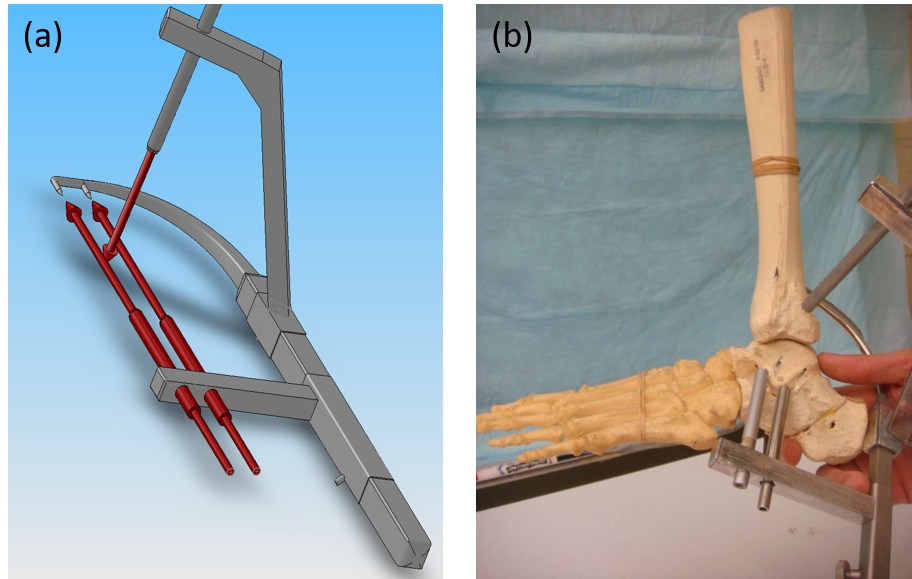Tools for Orthopedic Surgery
Tibiotalar Arthrodesis Guide (TAG)
A guide for accurate and reproducible ankle arthrodesis
For those patients requiring ankle arthrodesis, three screws must be placed into the ankle for fusion of the joint. Currently, the placement of these screws is accomplished by hand with only some assistance from fluoroscopy. This can be tricky or may result in error particularly when placing the third screw, or “home-run” screw, due to risk of interfering with the two screws already placed in the joint. A means by which an arthrodesis can be performed accurately without risk of interference between screws would be beneficial to both the surgeon and patient.
The technology
VCU researchers have developed a device to aid in ankle arthrodesis procedures. The Tibiotalar Arthrodesis Guide, or TAG, offers an accurate and reproducible way to insert screws required to fix the ankle joint. Two parallel, adjustable pin guides allow the surgeon to choose a screw insertion angle appropriate to the specific patient. The third pin guide allows for proper placement of the “home-run” screw in between the first two parallel screws, without fear of hitting the parallel screws. Because TAG offers an improved method in screw placement during arthrodesis, the surgical procedure is potentially both safer and more efficient in that lack of screw interference results in less X-ray exposure for both patient and surgeon, higher rate of joint fusion, and shorter procedure durations.
A prototype has been tested on a saw bone model, and fluoroscopy images of the ankle model showed proper insertion of all three screws. A second version of this prototype includes a new guide orientation for the third screw and a radiolucent handle so as not to block any views during imaging.

Figure 1. (a) CAD of lateral-medial option of TAG for left foot; (b) Lateral view of TAG prototype with saw bone model of left foot
